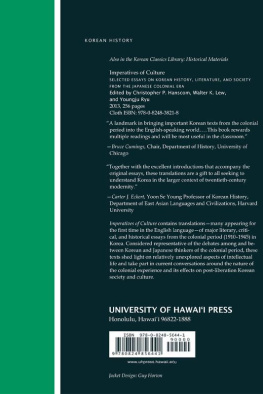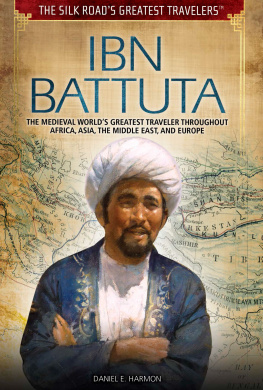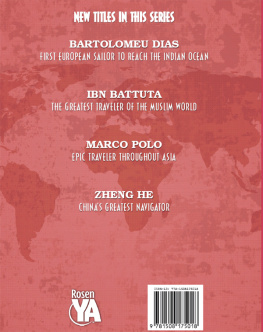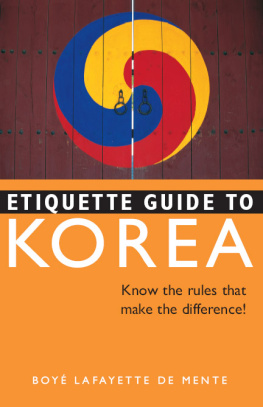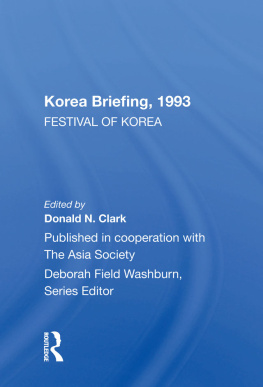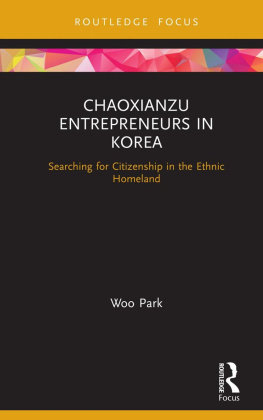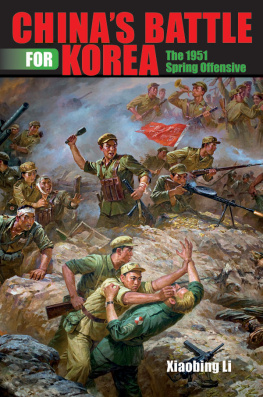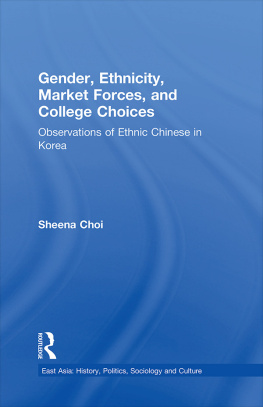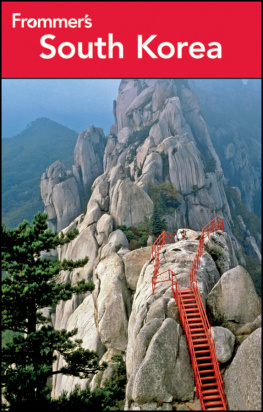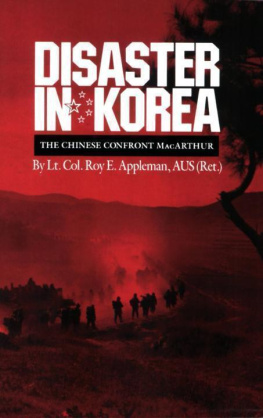Sem Vermeersch - A Chinese Traveler in Medieval Korea
Here you can read online Sem Vermeersch - A Chinese Traveler in Medieval Korea full text of the book (entire story) in english for free. Download pdf and epub, get meaning, cover and reviews about this ebook. year: 2016, publisher: University of Hawaii Press, genre: Religion. Description of the work, (preface) as well as reviews are available. Best literature library LitArk.com created for fans of good reading and offers a wide selection of genres:
Romance novel
Science fiction
Adventure
Detective
Science
History
Home and family
Prose
Art
Politics
Computer
Non-fiction
Religion
Business
Children
Humor
Choose a favorite category and find really read worthwhile books. Enjoy immersion in the world of imagination, feel the emotions of the characters or learn something new for yourself, make an fascinating discovery.
- Book:A Chinese Traveler in Medieval Korea
- Author:
- Publisher:University of Hawaii Press
- Genre:
- Year:2016
- Rating:5 / 5
- Favourites:Add to favourites
- Your mark:
- 100
- 1
- 2
- 3
- 4
- 5
A Chinese Traveler in Medieval Korea: summary, description and annotation
We offer to read an annotation, description, summary or preface (depends on what the author of the book "A Chinese Traveler in Medieval Korea" wrote himself). If you haven't found the necessary information about the book — write in the comments, we will try to find it.
A Chinese Traveler in Medieval Korea — read online for free the complete book (whole text) full work
Below is the text of the book, divided by pages. System saving the place of the last page read, allows you to conveniently read the book "A Chinese Traveler in Medieval Korea" online for free, without having to search again every time where you left off. Put a bookmark, and you can go to the page where you finished reading at any time.
Font size:
Interval:
Bookmark:
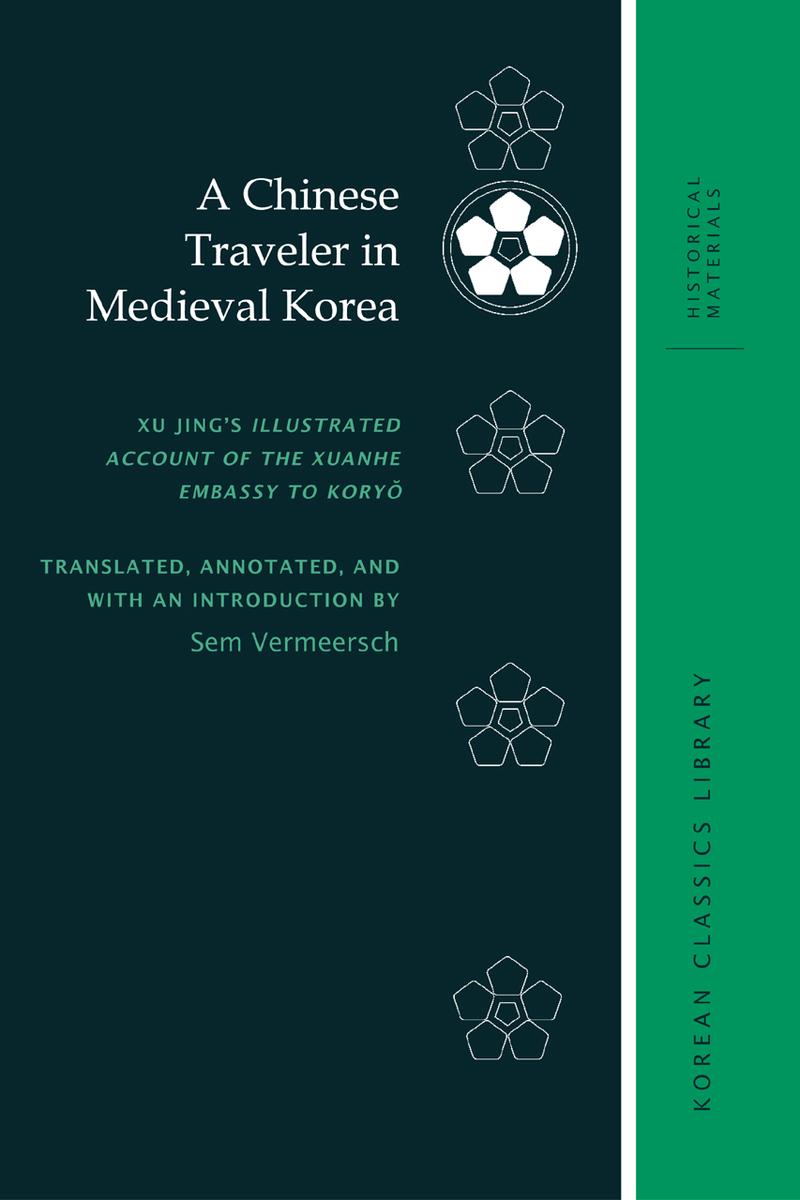
2016 The Regents of the University of California
All rights reserved
Printed in the United States of America
21 20 19 18 17 16 6 5 4 3 2 1
Library of Congress Cataloging-in-Publication Data
Names: Xu, Jing, 10911153, author. |Vermeersch, Sem, translator, writer of added commentary, writer of introduction.
Title: A Chinese traveler in medieval Korea : Xu Jings illustrated account of the Xuanhe embassy to Kory / translated, annotated, and with an introduction by Sem Vermeersch.
Other titles: Xuanhe feng shi Gaoli tu jing. English | Korean classics library. Historical materials.
Description: Honolulu : University of Hawaii Press, [2016] |Series: Korean classics library. Historical materials | Includes bibliographical references and index.
Identifiers: LCCN 2015046041 | ISBN 9780824856441 cloth : alk. paper
Subjects: LCSH: KoreaDescription and travelEarly works to 1800. |KoreaSocial life and customsEarly works to 1800. |KoreaCivilization9351392.
Classification: LCC DS902.2 .X8313 2016 | DDC 951.9/01dc23
LC record available at http://lccn.loc.gov/2015046041
Korean Classics Library: Historical Materials
Series Editors: John Duncan, University of California, Los Angeles
Namhee Lee, University of California, Los Angeles
Robert Buswell, University of California, Los Angeles
Series Editorial Board:
Donald Baker, University of British Columbia
Sun Joo Kim, Harvard University
Jay Lewis, Oxford University
Charles Muller, Tokyo University
Young-chan Ro, George Mason University
Ken Robinson, International Christian University, Tokyo
Edward Shultz, University of Hawaii, Mnoa
Senior Editor: Jennifer Jung-Kim, University of California, Los Angeles
This work was supported by the English Translation of 100 Korean Classics program through the Ministry of Education of the Republic of Korea and the Korean Studies Promotion Service of the Academy of Korean Studies (AKS-2007-AB-2002).
University of Hawaii Press books are printed on acid-free paper and meet the guidelines for permanence and durability of the Council on Library Resources.
Design and composition by Wanda China
Figures
1 Genealogy of Early Kory Kings
2 Bent Parasol
3 Cap with Protruding Wings
4 Stirrup Pole
5 Stem Cup with Saucer
6 Lion-shaped Incense Burner
Maps
2 Walls and Gates of Kaesng
3 Inner Palace Compound
4 Royal Palace Compound, Southern Half
5 Government Offices
6 Buddhist Temples
7 Layout of the Sunchn Hostel
8 Sea Route: Crossing the Yellow Sea from Mingzhou to Korea
9 Sea Route along the West Coast of Korea
Tables
xii
This project originated in my interest in Kory Buddhism. While looking for evidence of Buddhist practices during the Kory period (9181392), I came across Xu Jings description of the householder monk, a fascinating if puzzling account of a group of people whose status was somewhere between that of householder and monk. It being part of two chapters on religion in Xu Jings Illustrated Account of the Xuanhe-Era Embassy to Kory (Xuanhe fengshi Gaoli tujing, 1124), I started making a draft translation of those chapters, an undertaking that proved valuable for two research projectsthe history of Kaesng temples and a book on the Buddhist institution during KoryI was working on at the time. Just then, in 2004, out of the blue I was contacted by H Hngsik, who was mulling over an ambitious project to initiate a multivolume edition of the Illustrated Account of Kory. It was to comprise a text-critical edition of the original text as well as translations into Korean, Chinese, and English, and Professor H asked me if I was interested in doing the English translation. I immediately agreed and set to work on the other thirty-eight chaptersa project I came to regret many times, since the work combines the frustrating terseness and allusiveness of classical Chinese with highly technical descriptions of a variety of customs, objects, organizations, and so on.
Unfortunately nothing came of this project, but in 2007 the Academy of Korean Studies launched its Korean Classics Library 100 translation project and included the Illustrated Account of Kory on the list of works to be translated. As I was already working on the text, I applied to be its translator. Soon after, I was appointed assistant professor at Seoul National University and also became involved in the Kyujanggak Institute for Korean Studies, leaving me little time to work on the translation. Therefore, despite my best efforts to complete the work by the 2009 deadline, it was not until 2013 that I managed to submit a draft translation.
The Illustrated Account of Kory is well known, at least among historians and Korean studies researchers. Our main window into Kory society remains the History of Kory (Korysa), completed in 1451. However, the History of Kory deals almost exclusively with important political affairs, the central bureaucracy, and matters of administration. How society functioned and how people lived are almost entirely absent from xiv this text and not to be found in other Korean sources. The Illustrated Account of Kory, by contrast, being an outsiders perspective, contains some fascinating observations that began to draw the attention of scholars from early on. The section on celadon and Xu Jings description of Kory customs are well known.
Beyond these well-known passages the work has not been well studied. There are a handful of articles devoted to it and a few translations into modern Korean, but there remain numerous outstanding problems. To begin with, there is no modern critical edition of the text that compares all extant editions. Although the oldest remaining edition, the 1167 Jingjiang edition, does not pose many problems, alternative readings and/or additions from later editions sometimes provide valuable corrections or offer solutions to interpreting difficult passages. More serious is the problem of how reliable Xu Jings observations are and how to interpret them. For example, the last six chapters but one of the work are a detailed description of the sea route he and his diplomatic mission took. However, the names he gives for Korean islands for the most part do not match any found in Korean sources, making it extremely difficult to identify which islands he is talking about. Another example is his description of Kory military organization. While his description is fairly consistent with what we find in the History of Kory, there are also some notable differences, such as a division whose name is not attested in any other source. Did he make a simple mistake? Or is this a division that was somehow not recorded in Korean sources?
Regarding the first problem, while I prepared this translation on the basis of the 1167 Jingjiang edition, I have also compared it with the Zhibuzu zhai edition and indicated major discrepancies in the endnotes. Other editions or manuscripts have not been systematically compared, but as far as I could ascertain, they would add very little additional information to the two main premodern editions. As for the problems posed by the contents, I have tried to solve them as best as possible either by using all available reference works or, when these do not provide adequate answers, by making inferences on the basis of a study of the context in which the problematic term appears. Fortunately, there seems recently to be a renewed interest in the work among Chinese, Korean, and Japanese scholars; notably the work by Morihira Masahiko on the sea lanes has proven invaluable in solving some thorny issues.
Font size:
Interval:
Bookmark:
Similar books «A Chinese Traveler in Medieval Korea»
Look at similar books to A Chinese Traveler in Medieval Korea. We have selected literature similar in name and meaning in the hope of providing readers with more options to find new, interesting, not yet read works.
Discussion, reviews of the book A Chinese Traveler in Medieval Korea and just readers' own opinions. Leave your comments, write what you think about the work, its meaning or the main characters. Specify what exactly you liked and what you didn't like, and why you think so.

